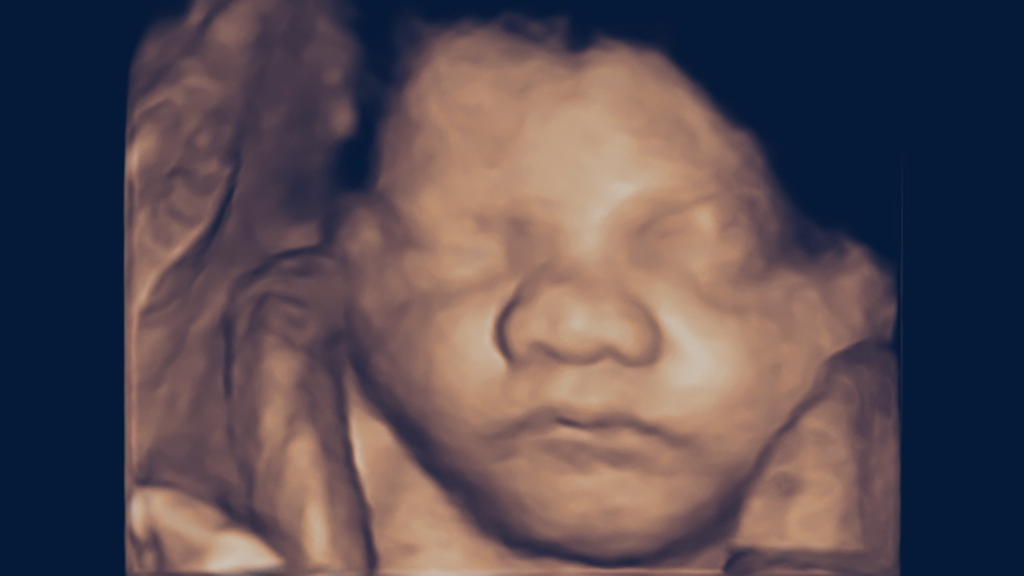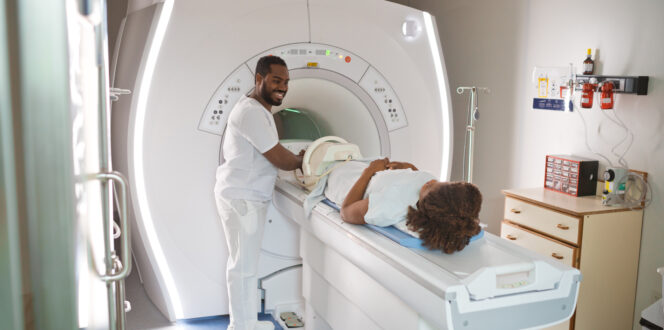Considering a 3D Ultrasound in Toronto? Here’s What to Know Before You Go

If you’re thinking of getting a 3D ultrasound in Toronto, here’s the information you need to know before you book your appointment.
As your baby develops you might be considering a 3D ultrasound to discover as much as you can about your little one.
Maybe you’re curious about whether your baby inherited your button nose or would like some peace of mind about those final stages of fetal development in the weeks leading up to delivery. Or perhaps your practitioner has suggested you get a 3D ultrasound in addition to a standard 2D ultrasound to better visualize a specific growth anomaly.
Whatever your reasons for getting a 3D ultrasound in Toronto, read on to learn:
- What a 3D ultrasound is and how it differs from a 2D ultrasound
- When to get one in addition to a regular 2D scan
- What details you’ll be able to see in the ultrasound image
- What to look for in a 3D ultrasound clinic in Toronto
What is a 3D ultrasound?
Like 2D ultrasounds, 3D ultrasounds use sound waves to transmit images of your baby to a monitor to show the developmental details of the fetus. An ultrasound technician moves a wand-shaped transducer over your abdomen to capture these images.
However, 3D images capture many different flat, two-dimensional angles of your baby and combine them into one image that shows the three-dimensional details of your baby’s anatomy, including facial features.
Health Canada states that 2D and 3D ultrasounds are safe when performed by a trained sonographer or ultrasound technician.
What is the difference between a 2D ultrasound and a 3D ultrasound?
Here’s a breakdown of how 3D ultrasounds differ from the 2D version:
- Image dimension: a regular 2-D ultrasound creates a flat, grayscale cross-sectional view of your baby, whereas 3D ultrasounds are made up of many 2D images pieced together to create a more lifelike representation.
- OHIP coverage: since 3D ultrasounds are considered elective and performed at private clinics, they are not covered under OHIP. Select private insurance companies may cover additional pregnancy ultrasound imaging.
- Requisition requirement: unlike 2D ultrasounds, you do not require a requisition from your practitioner to get a 3D ultrasound done in Ontario, since it’s considered elective and not necessarily for medical reasons.
- Video availability: 4D (or video) ultrasounds are sometimes offered in addition to 3D images through private clinics. 4D ultrasounds show video movement of your baby by putting together the still images captured by a 3D ultrasound.
It’s important to note that 2D ultrasounds are just as effective as 3D ultrasounds at clearly showing fetal development and growth—which is why they are still used as the imaging standard today.
If you have already had a 2D ultrasound, you may want to review the report before deciding whether to invest in a 3D ultrasound. PocketHealth offers fast, easy online access to ultrasound imaging and reports. Access your records here.
What does a 3D ultrasound show?
3D ultrasounds are known for providing a very detailed view of your baby’s facial features, which may be one of the reasons expectant parents choose to do this type of scan in addition to their regularly scheduled 2D ultrasounds.
Under special circumstances, medical practitioners may also recommend a 3D ultrasound to capture detailed images of your baby if they need more visual information about certain developmental abnormalities.
In these cases, 3D ultrasounds can give your practitioner additional information about:
- Congenital heart disease
- Craniofacial abnormalities, like cleft lip or palate
- Skeletal malformations, like enlarged bones
- Neural tube defects, like spina bifida
- Position of the placenta
- Volume and flow of blood to your placenta

Example of a 3D ultrasound image
When to get a 3D ultrasound
3D ultrasounds can be performed at any time but they are usually done during the third trimester. Since 2D ultrasounds give your practitioner the same information about your baby’s health as 3D ultrasounds, your practitioner may not recommend a 3D ultrasound, except in rare instances.
A 3D ultrasound can also determine the sex of your baby between 16 and 20 weeks, but your practitioner will have already ordered a traditional 2D prenatal ultrasound during that time, which provides the same information.
What week is best for a 3D ultrasound?
Between weeks 24 and 36 is the best time to get a 3D ultrasound if you want a chance to see your baby’s features clearly and show their adorable face to your friends and family!
By 28 weeks, your baby will be able to retain enough fluid to showcase the shadows and planes of their facial features. But farther along in the third trimester, fluid around the face may begin to dissipate, making it hard to capture tiny details. As your pregnancy continues, there will also be less room in your womb, making it more difficult to get a clear view of your baby.
Pros and cons of a 3D ultrasound
It can feel like there’s a lot of information to consider when deciding whether to get a 3D ultrasound, but reviewing these pros and cons can help you make the best choice.
Pros of a 3D ultrasound
- Additional imaging tool: Practitioners can use 3D ultrasound images along with 2D ultrasound results to provide a better view of some development abnormalities that are harder to see via a traditional 2D ultrasound alone, such as a cleft palate.
- Clearer facial features: You may be able to see your baby’s features more easily in a 3D ultrasound, although getting a clear enough image depends on your baby’s position at the time of the ultrasound.
Cons of a 3D ultrasound
- Not regulated in Ontario: not all diagnostic imaging clinics in Ontario are regulated in the same way. 3D ultrasound clinics are private in Ontario, which could mean the technicians at private clinics don’t have the same level of training as the technicians at diagnostic imaging clinics.
- Not diagnostic: if the technician at your 3D ultrasound appointment provides a medical assessment (which is illegal in Ontario since they are not medical doctors), expectant parents may worry unnecessarily, so it is very important to review your images with your practitioner if you have any concerns.
- Elective procedure: since 3D ultrasounds are considered elective (no medical purpose except in rare circumstances), their costs are not covered by OHIP. Private insurance only covers the additional imaging in certain cases, meaning you could be paying hundreds of dollars for a 3D glimpse of your little one.
How to choose a 3D ultrasound clinic in Toronto
It is important to do some research when deciding which 3D ultrasound clinic to visit. Before deciding, consider the following:
- Licensed and registered ultrasound technicians: Call ahead and ask whether all technicians working at the clinic are licensed and registered ultrasound technicians. Ultrasound technology is considered safe only when used by a licensed technician.
- Positively reviewed: Make sure you read those reviews. Don’t waste time or money booking in with a clinic that has low reviews—keep looking for well-reviewed clinics that make expectant parents feel comfortable, answer questions and don’t push expensive packages.
- Fair pricing, with a range of packages: Review the pricing and packages of the 3D ultrasound clinics you’re thinking of visiting. Pricing across the GTA is similar and you’ll want to make sure any clinic you choose lines up with the average.
- Established, with multiple locations: 3D ultrasound clinics that have been operating for many years with multiple locations throughout the GTA may be more reliable than single sites that have only been open a short time.
How much is an ultrasound in Toronto?
OHIP doesn’t cover the cost of a 3D ultrasound, but it does cover the cost of 2D ultrasounds. Some private insurance companies may cover part or all of the cost of additional imaging. This is because 2D ultrasounds are just as effective at providing the information your practitioner typically needs throughout your pregnancy journey and are the recognized standard of care across Ontario.
The price of a 3D ultrasound in Toronto depends on the clinic but can be as high as $300 for multiple scans. Many clinics also offer free re-booking if your baby is not in an ideal position to capture images.
How to prepare for your 3D ultrasound appointment
You can prepare for a 3D ultrasound appointment the same way you would for any 2D ultrasound, by:
- Booking your appointment when your baby is more active. This allows the ultrasound to capture as many angles of your baby as possible. Drinking a cold sugary beverage right before your appointment can also help make your baby more active.
- Arriving with a full bladder. Sound waves travel more easily through liquid, so a full bladder helps your technician capture the best image possible of your baby.
- Drinking lots of water in the week leading up to your ultrasound. Staying well hydrated helps keep amniotic fluid clear, allowing for better images.
- Wearing loose and comfortable clothing. Make sure that whatever you wear is easy to take off and put on, and that you don’t mind if it gets stained from the ultrasound gel.
- Bringing friends or family. Since 3D ultrasounds are elective, you are often allowed multiple support people in the room with you. Some clinics even offer live broadcasting for those who can’t attend.
You’ll also want to ask some important questions when making your 3D ultrasound appointment, such as:
- Are your technicians licensed?
- How do you share my images?
- How long is the appointment?
- How many people can join me?
- Can I take my own photos and videos during the appointment?
How do I access my 3D ultrasound images?
Most 3D ultrasound clinics have their own methods of sharing your ultrasound images, but by uploading your images into PocketHealth you can have all your pregnancy imaging in one place. Your 2D ultrasound images can be stored together with your 3D ultrasound images so you can easily see how your baby is growing and developing. Access your records here.
What does a 3D ultrasound show?
Remember that the technician who gave you the ultrasound is not equipped to answer questions about your health or your baby’s health, so don’t forget to follow up with your practitioner if you have any concerns.
3D ultrasounds: an additional imaging option
3D ultrasounds can give you and your loved ones an incredible glimpse of your new baby. They can also provide supporting visual information and may be suggested by your practitioner in addition to 2D scans under certain circumstances. Note that standard 2D ultrasounds are just as effective as 3D ultrasounds at providing your practitioner with information about the health of your baby.
If you decide to get a 3D ultrasound, remember that it’s not covered under OHIP, so there will be a cost for the appointment and subsequent images. To make sure you enjoy the exciting experience of seeing your baby in detail, research how to prepare for your appointment ahead of time, including questions you can ask when booking your appointment.
How PocketHealth works
Learn more about how to use PocketHealth to access and share your pregnancy ultrasound records.
Published: July 19, 2023
Trusted by more than 800+ hospitals and clinics.



















